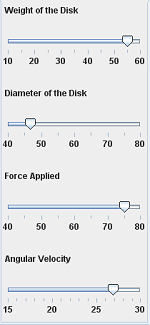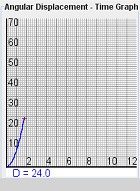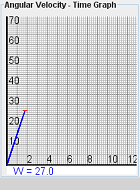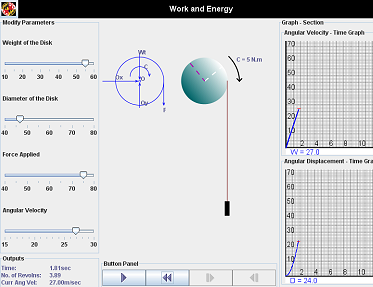![]() Work Energy
Work Energy
Principle of Work and Energy. If the applet doesnt load,
you may need to install the appropriate plugins, a link to the plugins can be found
on the home page.
| User’s Guide | |
This Simulation covers: A free body diagram of the body when it is located at an intermediate point along the path, in order to account for all the forces and couples which do work on the body as it moves along the path. The principle of Work and Energy is used here to solve the kinetics problem as this involves velocity, force and displacement. |
|
Kinetic
Energy: Since the
disk rotates about a fixed axis, the Kinetic Energy (T) can be computed
using: T = ½ Io * ω2
Io = ½ m * r2 |
|
Work (Free-Body Diagram):
As shown in diagram, the pin reactions Ox and Oy and the weight do not work, since they are not displaced. The couple moment C, having a constant magnitude, does positive work UM = M * θ As the disk rotates through a clockwise angle of θ rad, and the constant force F does positive work UFc = Fs As the cord moves downwards = θ *r |
|
Principle
of Work and Energy: {T1} + {∑U1-2} = {T2} |
|
Various inputs can be Also, the final angular |
The behavior of Angular Velocity and Displacement with
|
This is a sample screen with the body slide down the screen. |
|





